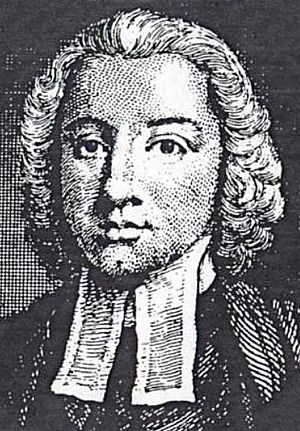Edward Rowe Mores facts for kids
Edward Rowe Mores (born January 24, 1731 – died November 22, 1778) was an English historian and expert on old things, also known as an antiquarian. He also studied how printing works (called typography). Mores was very important in starting a company called The Society for Equitable Assurances on Lives and Survivorships, which is now known as Equitable Life. He is also famous for being the first person to use the job title actuary for someone who works with insurance. An actuary is a professional who uses math and statistics to assess risk, especially in insurance.
Contents
Early Life and School
Edward Rowe Mores was born on January 24, 1731, in a place called Gore Court in Tunstall, near Sittingbourne in Kent. His father, Edward Mores, was from a wealthy family (called the gentry) and had been the rector (a type of church leader) of Tunstall for 20 years. His mother, Sarah Windsor, was the daughter of a London merchant. Edward also had a sister named Ann-Catherine.
In 1740, Mores's father passed away, leaving him a lot of money (an inheritance). Later that year, Edward started attending the Merchant Taylors' School in London. His mother soon got married again to Richard Bridgman, who was a grocer (someone who sells food and household items) in Whitechapel, London. Richard Bridgman became quite important in the Grocers' Company, a group for grocers. In 1746, Mores went to Queen's College, Oxford, where he earned his first degree (a BA) in 1750 and a higher degree (a MA) in 1753.
His Work as an Antiquarian
While at Oxford, Edward was known for how much he knew about many different subjects and for his unique personality. He studied Latin and even spoke it almost all the time to his daughter when she was little. Besides mathematics, he was interested in many other things, like heraldry (the study of coats of arms) and architecture. In 1752, he was chosen to be a fellow of the Society of Antiquaries, a group for people who study old things. The next year, he was elected to the society's council.
He published his first book in 1749, when he was only 19 and still at Oxford. The book was called Nomina et insignia gentilitia nobilium equitumque sub Edoardo primo rege militantium. It was a study of the coats of arms of knights who served under King Edward I. For several years, he worked on a plan to write a history of Berkshire county. He never finished it, but his notes were published after he died in 1783. In 1754–55, he helped his friend Andrew Ducarel write a history of Croydon Palace and the town of Croydon. However, they had a big disagreement when Mores found out he wasn't given enough credit for his work. This book was also published in 1783.
Starting Equitable Life
After a mathematician named James Dodson died, Mores became the leader of a group that eventually started the Society for Equitable Assurances on Lives and Survivorship in 1762. Mores decided that the main person in charge of this new company should be called the "actuary." This is the first time we know of this job title being used in a business setting.
Family and Later Life
Mores married Susannah Bridgman in 1753. She was the daughter of Richard Bridgman, who was Mores's stepfather. Edward and Susannah had two children: a daughter named Sarah, who died before her father, and a son named Edward Rowe. As mentioned before, Mores strongly believed that Latin was the best language, so he only spoke Latin to his children.
Edward Rowe Mores passed away on November 28, 1778, at his home in Etlow House, Low Leyton, Essex. He died from a serious leg infection called gangrene. He was buried next to his wife, who had died 11 years earlier, in the churchyard of St Mary the Virgin in Walthamstow.


